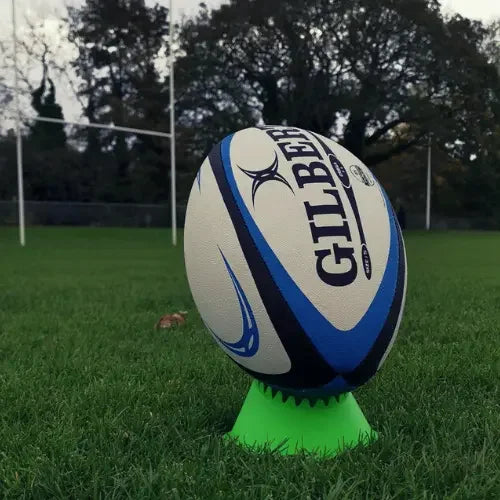Rugby vs Football Boots: What's The Difference?
Confused about the difference between rugby boots and football boots? You're not alone. Both evolved from similar origins, but cater to the unique demands of each sport.
This guide will equip you to choose the perfect boots to dominate the pitch.

[prc-collections-carousel]
Key Differences That Matter
Fit & Stability
-
Rugby: Wider, more stable boots with options for 8-studs for more grip in scrums and mauls.
- Football: Narrower, more nimble boots for agility and lightweight feel.
Power vs. Precision
-
Rugby: Internal support systems and longer studs for powerful drives and better traction.
- Football: More flexible sole and shorter studs for pinpoint control and quick footwork.
Materials
Both utilise synthetics and leather, but some rugby boots also feature beefed-up stitching to improve durability.

Choosing Your Perfect Boots
Rugby Player
-
Forwards: Front and Second Rows - Prioritise stability and protection for drive and traction in scrums. Opt for supportive boots with 8 studs. (e.g. adidas Kakari)
-
Back rows - Still need to prioritise stability but boots can be lighter and many backs row players opt for 6 studs on each boot. (e.g. Canterbury Phoenix Genesis)
- Backs: Focus on speed and agility. Choose low-cut boots with a focus on lightweight materials and technical zones for ball contact when kicking, if required. (e.g. Adidas RS-15).
Football Player
- All Positions: Prioritise touch and manoeuvrability. Select boots with a snug fit, low-cut profile, and strategically placed studs for your preferred playing surface (e.g. Adidas Predator).

Understanding Soleplates: Your Boots for All Conditions
Just like studs, the type of soleplate you need depends on the battlefield you'll be contesting.
Both rugby and football offer options for Firm Ground (FG), Soft Ground (SG), with football boots additionally coming with Multi-Ground (MG), and Artificial Grass (AG) variants.
Confused by the abbreviations? Let's break it down:
-
Firm Ground (FG): Ideal for dry, natural grass pitches where you'll need stability and grip for quick changes of direction.
-
Soft Ground (SG): Built for the mud! These bad boys have longer studs to dig in deep on wet and boggy pitches.
-
Multi-Ground (MG): The all-rounder, offers decent traction on both natural and artificial surfaces.
- Artificial Grass (AG): Engineered for the new breed of plastic pitches (3G/4G), these have shorter, more numerous studs for optimal grip on synthetic surfaces.
Not sure which soleplate is right for your next game? In football, all these sole variations will be suitable, in rugby it would be recommended to keep to Soft Ground and Firm Ground variations.

Can I wear Football Boots in Rugby?
A tricky question! The laws do allow it, provided the studs meet regulations (no more than 21mm in length). Boots with studs known as Blades are a definite no however.
Here's the breakdown:
-
Screw-in Studs: If you play both sports and use screw-in studs, be prepared to switch them based on the referee's call and the game surface.
- Moulded Studs: These should always be fine but watch out for bladed style studs as the referee may say no to these. As stated stick with FG versions for better grip.
So, should you wear football boots for rugby?
It depends on your position:
-
Backs: Football boots can be a great choice! They offer a nice balance between speed and agility, perfect for quick bursts and powerful kicks.
- Forwards: Rugby boots are generally better suited for the front rows and second rows. They provide crucial protection and stability during scrums, rucks, and mauls, while also allowing you to generate power. Back Rows could opt for a football boot if it still offers good traction.
Ultimately, the best boots for you will depend on your playing style and position, and which boot provides the best fit.
Rugbystuff.com offers an extensive range of rugby boots from top brands like Adidas, Canterbury, Gilbert and Mizuno. Browse our collections and find the perfect fit to unleash your potential on the pitch!
Bonus Tip: Unsure about stud types? We have a handy guide to picking the right studs for your playing surface!






















